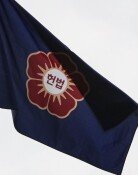Critical changes: why Kaesong complex cannot continue operations
Critical changes: why Kaesong complex cannot continue operations
Posted February. 15, 2016 07:19,
Updated February. 15, 2016 07:25
"It appears that 70 percent of the capital influx to the Kaesong Industrial Complex went to the clerk office of North Korean Workers' Party, and the clerk office and the office 39 (which manages governing fund of Kim Jong Un) spend that money on purchasing nuclear weapons, missiles, and luxury items for Kim and also preserving and praising the Kim family's achievements," South Korean Unification Minister Hong Yong-pyo said in KBS TV program "Sunday Analysis." This remark is a continuation of his earlier comment made on last Wednesday when he made the announcement that the industrial complex would be shut down. In that announcement, Hong stated that the capital influx to the complex, which is 560 million dollars, was used for development of nuclear weapons and missiles. Hong emphasized the negative aspects of the Kaesong complex probably because the public started relating the shutdown to aggravation of the South and North Korean relations.
The government does not seem to have a clear answer to the question why talking about such negative aspects of the industrial complex now even though they did not shut it down when they knew that North Korea used the income for development of nuclear weapons and missiles. Minister Hong tried to answer to the question by saying, “We had continued the complex's operations during North Korea’s nuclear tests because of positive impact and effectiveness, which the international community also recognized. A better answer would have been that there have been some critical changes.
North Korea has conducted nuclear tests four times and developed inter-continental ballistic missiles (ICBM), which is shown through the launch of Kwangmyongsong preceded by Unha 3. This brought the U.S., Japan, and the UN to discussion tables regarding imposing intensive sanctions on North Korea such as secondary boycott. Nevertheless, South Korea does not have a good reason to request for stronger sanctions while still sending dollars to North Korea through the industrial complex. Furthermore, although now is the time to put heavy pressure to North Korea, the government does not have any measures other than re-using the "megaphone method" and the complex shutdown.
In addition to this, the Democratic Party keeps urging the government to release evidences how the capital for the Kaesong complex was used for development of nuclear weapons and missiles, but they are not in a position to make such a request. The right thing for them to do is to admit that it was them who contributed to North Korea’s survival and development of nuclear weapons and missiles by sending tons of rice to North Korea during the Kim Dae-jung and Roh Moo-hyun administrations.
According to a survey done by poll-taker Realmeter, 47.5 percent of the public said "well done" and 44.3 percent said "wrong decision" on the government’s decision to completely shut down the Kaesong complex. The industrial complex has been a symbol of peaceful reconciliation and coexistence of South and North Korea and also gave North Koreans a chance to learn about excellence of the market economy and the liberal democracy system. There is also a concern about closing the only effective communication channel with North Korea. Much of the public criticized the government’s decision to the shutdown, which was still in operation after North Korea’s first three nuclear tests, as well as attacks on the South Korean naval vessel Cheonan and Yeonpyeong Island.
However, we need a firm determination now if we want to stop North Korea’s ambition to become a nuclear power. We need a unified public opinion in order to make North Korea give up their nuclear weapons and missiles that are threatening existence of South Korea.
한기흥기자 eligius@donga.com
Headline News
- Med professors announce intention to leave hospitals starting Thursday
- Bridge honoring Sgt. Moon Jae-sik unveiled in Pennsylvania
- Chief of Staff Chung tells presidential secretaries to stay away from politics
- US FTC bans noncompete agreements
- N. Korea launches cyberattacks on S. Korea's defense companies







